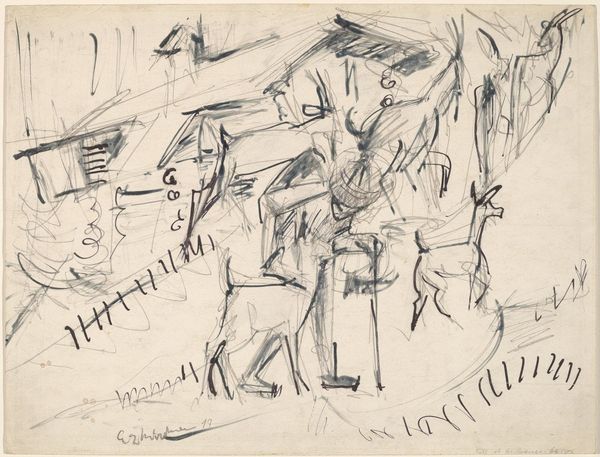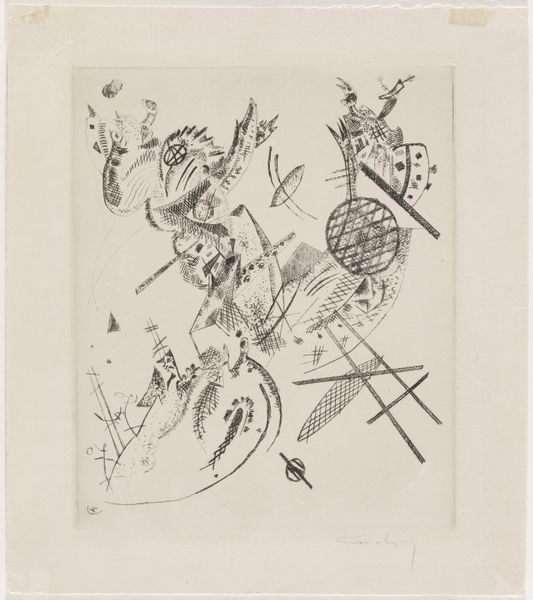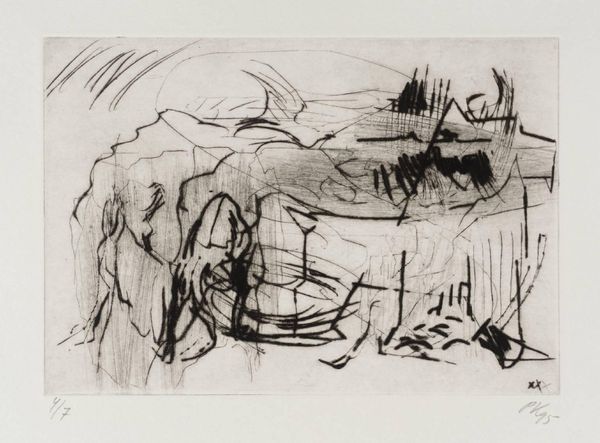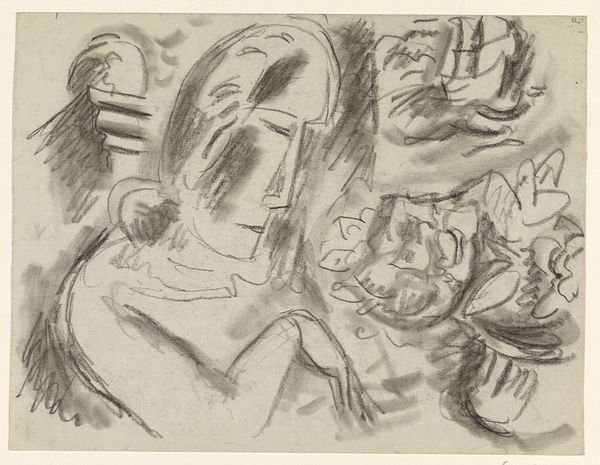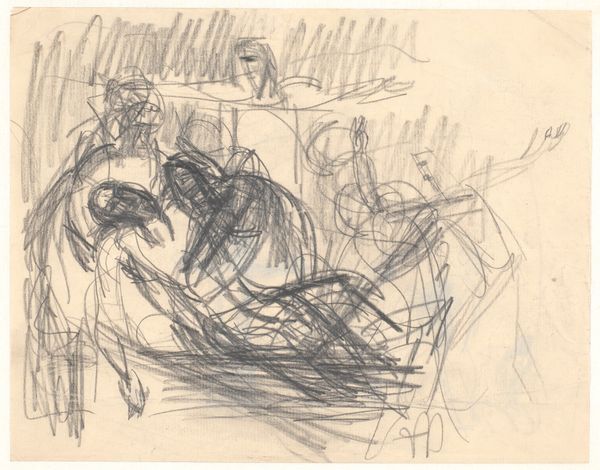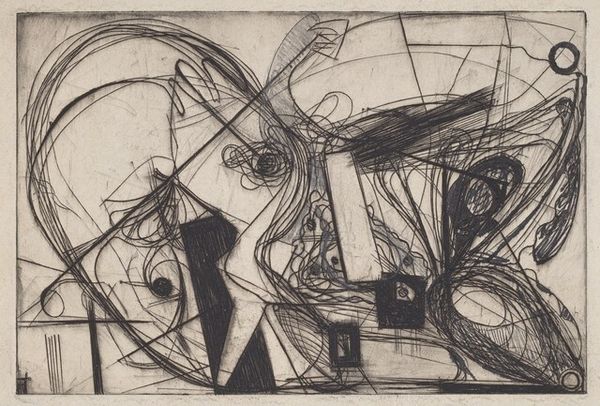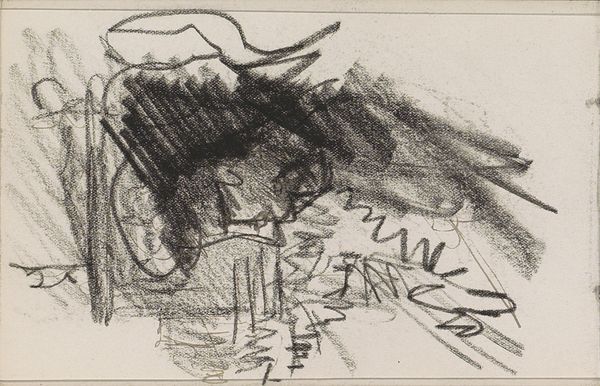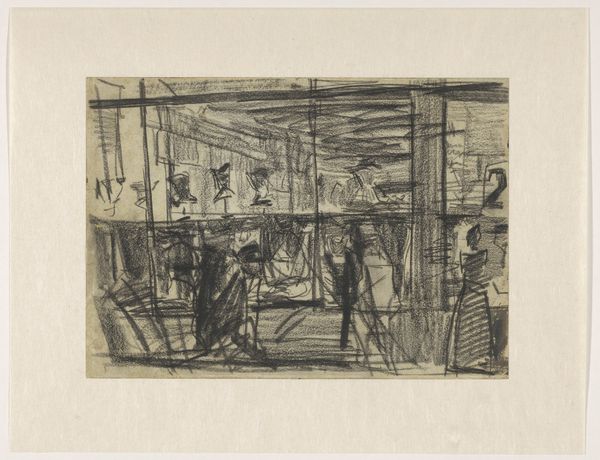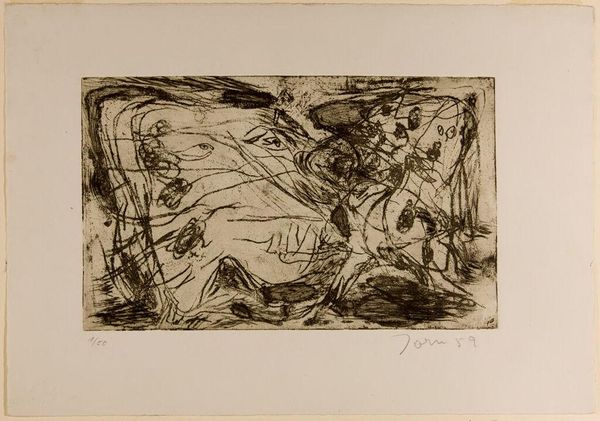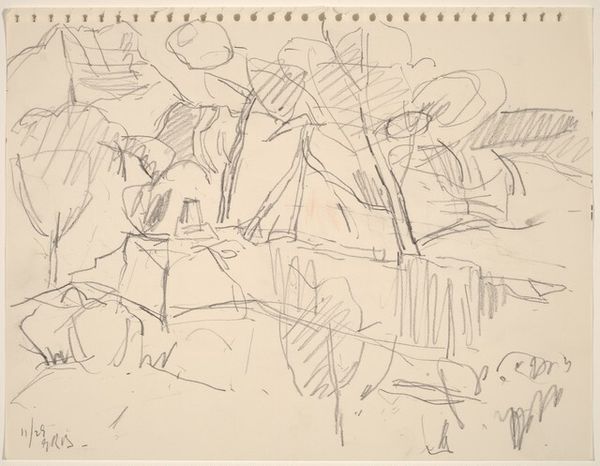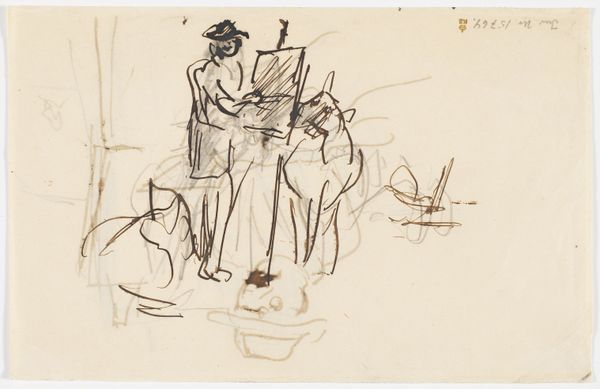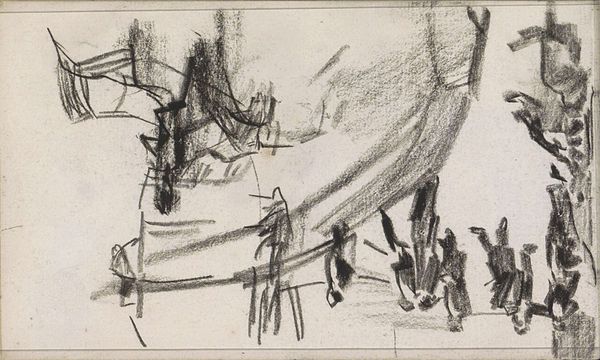
cardboard, drawing, paper, chalk
#
cardboard
#
drawing
#
landscape
#
figuration
#
paper
#
expressionism
#
chalk
Copyright: Public Domain
Curator: This is August Macke’s “Girls on the Railway Crossover in the Evening,” executed in 1913 with chalk on paper and cardboard. It currently resides in the Städel Museum. Editor: The energy jumps right out. There's a beautiful urgency to those lines, like trying to capture a fleeting dream. Are they rushing away, or towards something? Curator: Precisely! Observe how Macke employs stark, rapid strokes to delineate the figures and the environment. This emphasis creates a sense of immediacy but it also fractures the pictorial space into near abstract planes. The lines evoke simultaneous feelings of entrapment and propulsion. Editor: Trapped for sure. I feel the girls almost swallowed up by their surroundings. It reminds me of childhood fears, when every shadow felt alive and threatening. Notice, they have each other’s company: maybe they feel a sense of comfort while navigating this harsh terrain? Curator: A poignant interpretation. I agree. Considering the composition further, note the limited tonal range and how the light source, likely an evening glow suggested in the title, barely penetrates the harsh network of the foreground. It emphasizes the ambiguous atmosphere: hope, perhaps, struggling with the anxieties of modern life. Editor: Exactly. And in terms of pure sensation, it's amazing how a few lines of chalk on paper evoke the feeling of an entire landscape. There is something about Expressionism that embraces uncertainty: instead of rendering what it's obvious it allows imagination to bloom… This raw, unsettled landscape, mirrors so well, the transition into adolescence! Curator: Nicely stated. The raw, the unsettled—attributes inherent not only to the landscape, but also, dare I say, intrinsic to the materiality of chalk itself. The work resists facile categorization, embodying Macke’s aesthetic and spiritual vision during a pivotal moment in art history. Editor: Absolutely, this experience has illuminated a shared vision: what once seemed a chaotic sketch now reveals a landscape of both individual and universal significance.
Comments
stadelmuseum about 2 years ago
⋮
This study is closely related to the painting "Two Girls" (Städel Museum, Inv. Nr. 2011). Both depict an urban setting with two young girls at the centre. In the drawing, Macke virtually locked these surroundings into a web of diagonal zig-zag hatchings, comb-like strokes and intersecting arcs and sweeps. The strongly rhythmized lines translate the impulses of motion, light effects and noises of the big city into an abstract scaffolding and lend the drawing a dynamic effect. In the painting, on the other hand, these lines have evolved into crystalline geometric forms that envelop the two figures. In both mediums, however, Macke combined the representational with the abstract, thus finding his way to his own characteristic brand of “realism”.
Join the conversation
Join millions of artists and users on Artera today and experience the ultimate creative platform.
